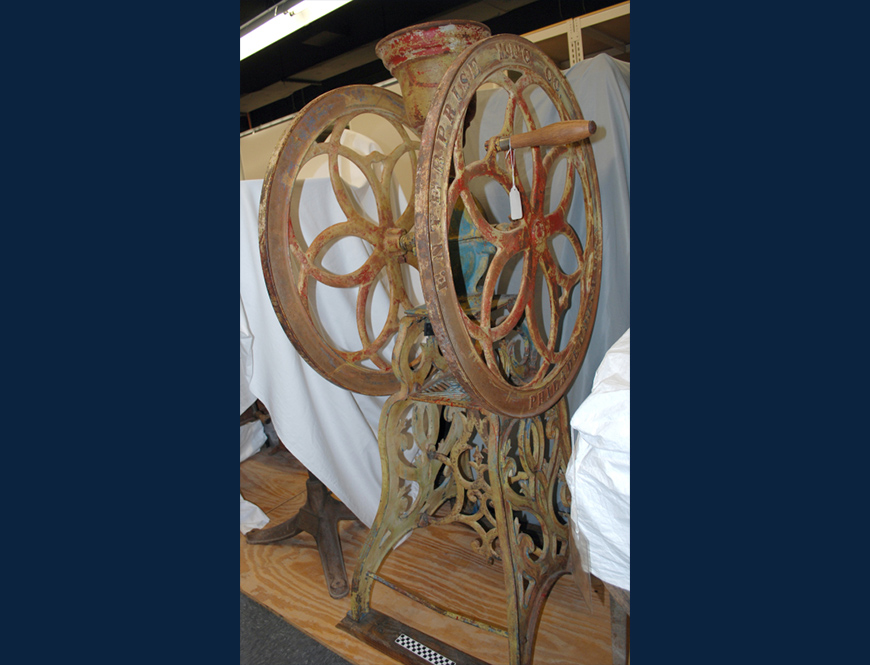This object is a coffee grinder that was manufactured in 1873 in Philadelphia by the Enterprise Manufacturing Company. The coffee beans would be placed in the top compartment, and the wheels on the side would be turned. This would cause the beans to be ground into a fine powder, which would be deposited into the compartment on the bottom that could be removed to collect the powdered coffee grounds.
Coffee drinking has become a part of everyday life for people all over the world. The consumption of coffee is believed to have its origin in the ancient land of Abyssinia, which is now called Ethiopia. Their legend holds that the first to discover the energizing properties of coffee were goats – and soon after, their herder.
According to the legend, a man named Kaldi was following behind his flock of goats in the mountains as they roamed for food. When it was time for them to go home, Kaldi played his flute to draw the goats back to him, but they did not come. He finally found them frolicking in a clearing – running, dancing on their hind legs, and butting each other playfully. Kaldi could not figure out what was making his goats act that way. He initially thought someone had bewitched them until he spotted the goats eating bright red berries off a nearby tree. Fearing the berries might be poisonous, Kaldi kept a close eye on the goats for hours until they finally settled down enough to be led home. The next day, the goats ran directly to the same clearing, ate more of the berries, and began their frolicking all over.
This time, Kaldi decided he would try the berries as well, at first spitting out the seed, which was black and bean-looking, then later eating that too. After eating some of the seeds, Kaldi began feeling a slow tingle and an overwhelming burst of energy. He took some of the berries home and shared them with others, rapidly spreading the knowledge of the miraculous energy-giving bean.
Another version of the ending is Kaldi taking the berries to a monk, who disdainfully threw them in the fire. Upon smelling the rich aroma of the roasted beans, he promptly scraped the beans out the fire and ground them, pouring water over the grounds making the drink we know of as coffee. This energy giving drink rapidly spread through the land.
Coffee trees eventually were spread and traded all over the world, making coffee one of the most popular drinks in the world. By the 15th century, coffee was growing in Arabia and the drink became so popular they began opening coffee houses called qahveh khaneh. It spread to Europe by the 1600s and coffee houses sprang up there as well, as social centers. By the middle of the 17th century, coffee had come to America. Its popularity was slow going until the time of the Boston Tea Party, when the people revolted against taxes and dumped British tea into the Boston Harbor. With tea being out of fashion, Americans discovered a love of coffee that continues to this day.
